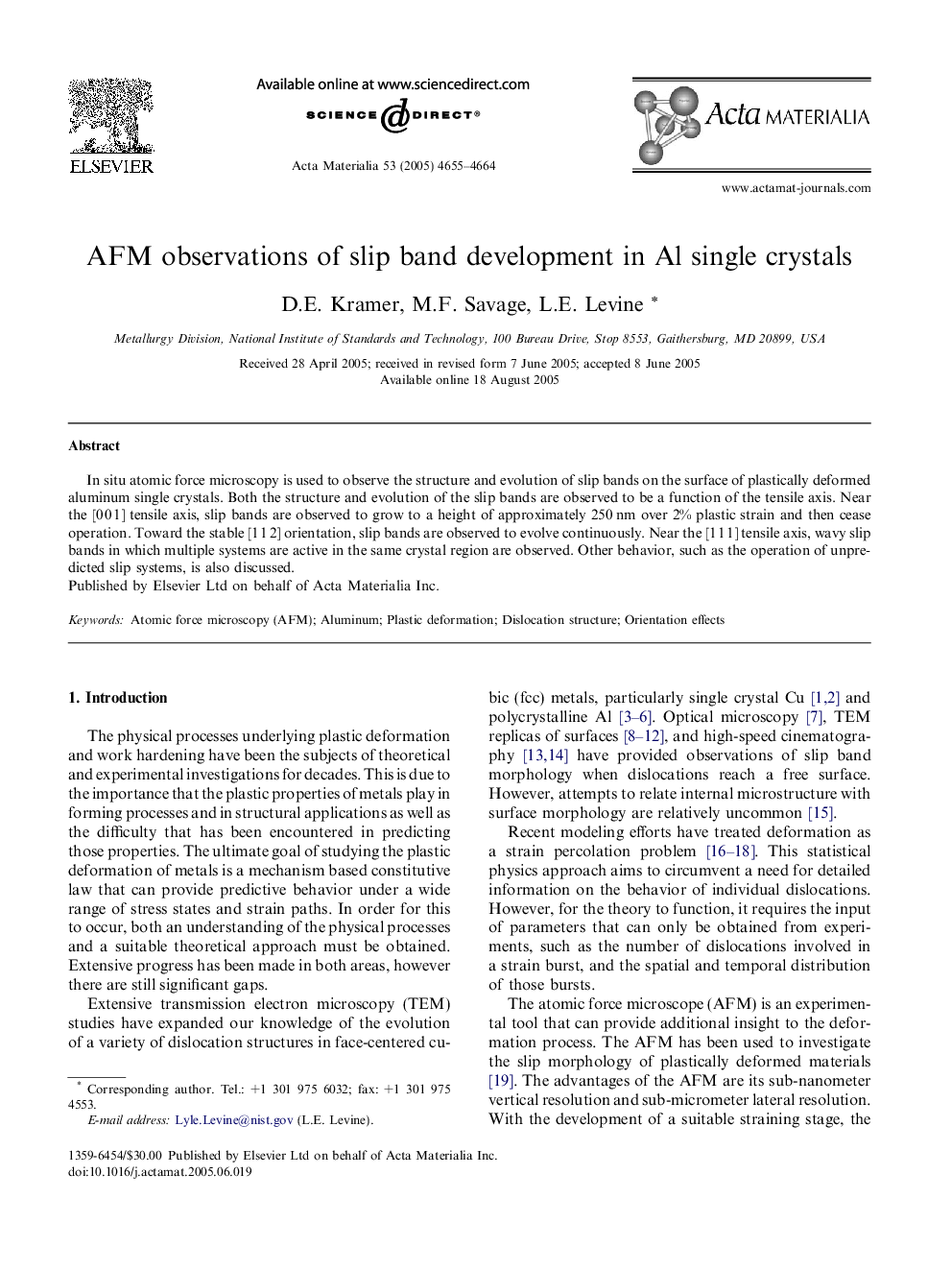| Article ID | Journal | Published Year | Pages | File Type |
|---|---|---|---|---|
| 1450964 | Acta Materialia | 2005 | 10 Pages |
Abstract
In situ atomic force microscopy is used to observe the structure and evolution of slip bands on the surface of plastically deformed aluminum single crystals. Both the structure and evolution of the slip bands are observed to be a function of the tensile axis. Near the [0 0 1] tensile axis, slip bands are observed to grow to a height of approximately 250 nm over 2% plastic strain and then cease operation. Toward the stable [1 1 2] orientation, slip bands are observed to evolve continuously. Near the [1 1 1] tensile axis, wavy slip bands in which multiple systems are active in the same crystal region are observed. Other behavior, such as the operation of unpredicted slip systems, is also discussed.
Keywords
Related Topics
Physical Sciences and Engineering
Materials Science
Ceramics and Composites
Authors
D.E. Kramer, M.F. Savage, L.E. Levine,
